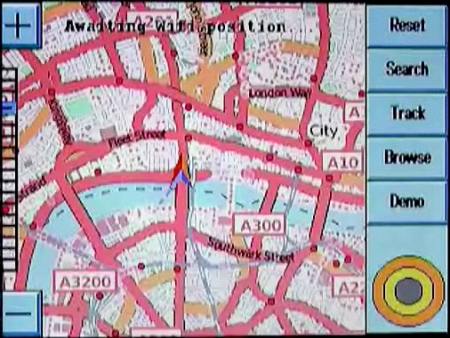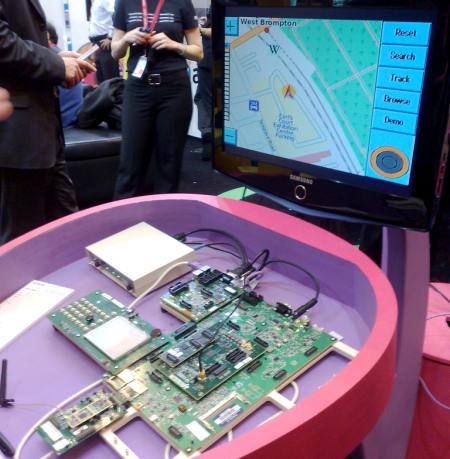Location Based Services (or LBS for short) is another technology Symbian was demoing at the Smartphone Show. Specifically, we had a demo application that was showing how the LBS system within Symbian OS can use a variety of technologies to find out where you are and then make that information available to applications on the device.
Our demo used a variety of methods to locate itself on a map (the map data was provided by Open Street Map):
-
Cell-ID & last known position within that cell. This least accurate but also the fastest method (and requires no extra power assuming that your phone is not in flight mode). It’ll tell you roughly which part of a town you’re in and is useful if you just want a map of your surroundings (perhaps to see what places of interest are nearby or to get a local weather forecast).
-
WiFi positioning. This method uses a locally stored database of WiFi MAC addresses and their locations (though there’s no reason this couldn’t be updated via the internet). In built-up areas where there are lots of WiFi hotspots it can narrow down your location to the building you’re in and do so pretty quickly (within 5 seconds). This would be accurate enough to show you roughly where you are on a map (for example which street you’re on).
The underlying implementation in this demo was provided by Skyhook Wireless, but the LBS framework in Symbian OS is extendable so this could be replaced or augmented by other implementations (potentially user-installable ones too!). Interestingly this is not limited to WiFi positioning – you can use any method you like!
-
A-GPS. Finally, the good ol’ GPS that we all know and love. The most accurate but also the slowest when it comes to getting a fix on your location. In this case the GPS is assisted not only by the cell ID but also the WiFi positioning. When used in our office (in a room with thick stone walls and tall buildings outside) this combination managed to get a GPS fix within about 15 seconds despite the very weak satellite signal.
Apart from pinpointing where you are down to a few metres, GPS is useful when your location needs to be tracked. For example for turn-by-turn directions.

Positioning on phones isn’t really a new thing, but the nifty part is LBS framework can take care of choosing or combining different positioning technologies for you. It can trade off power-consumption and speed versus accuracy depending on the application and it can combine inputs from various methods to get a quicker or more accurate lock on your location. And since it’s built right into the OS all applications can take advantage of it.
If you happen to have SDN++ access, you can find a video of the demo and some additional information on the Smartphone Show page there (SDN++ log-in required).
